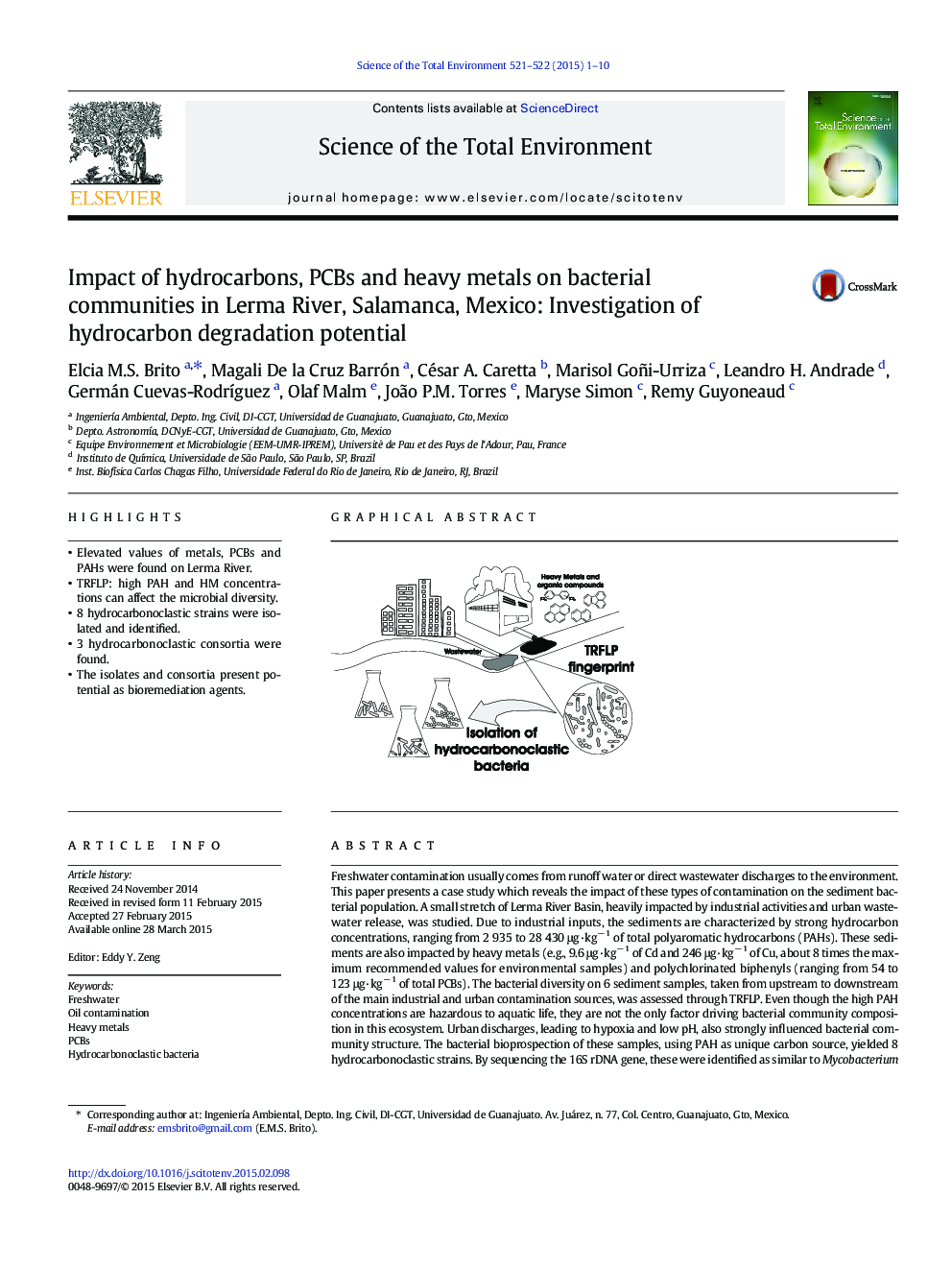| Article ID | Journal | Published Year | Pages | File Type |
|---|---|---|---|---|
| 6326551 | Science of The Total Environment | 2015 | 10 Pages |
â¢Elevated values of metals, PCBs and PAHs were found on Lerma River.â¢TRFLP: high PAH and HM concentrations can affect the microbial diversity.â¢8 hydrocarbonoclastic strains were isolated and identified.â¢3 hydrocarbonoclastic consortia were found.â¢The isolates and consortia present potential as bioremediation agents.
Freshwater contamination usually comes from runoff water or direct wastewater discharges to the environment. This paper presents a case study which reveals the impact of these types of contamination on the sediment bacterial population. A small stretch of Lerma River Basin, heavily impacted by industrial activities and urban wastewater release, was studied. Due to industrial inputs, the sediments are characterized by strong hydrocarbon concentrations, ranging from 2 935 to 28 430 μg·kgâ 1 of total polyaromatic hydrocarbons (PAHs). These sediments are also impacted by heavy metals (e.g., 9.6 μg·kgâ 1 of Cd and 246 μg·kgâ 1 of Cu, about 8 times the maximum recommended values for environmental samples) and polychlorinated biphenyls (ranging from 54 to 123 μg·kgâ 1 of total PCBs). The bacterial diversity on 6 sediment samples, taken from upstream to downstream of the main industrial and urban contamination sources, was assessed through TRFLP. Even though the high PAH concentrations are hazardous to aquatic life, they are not the only factor driving bacterial community composition in this ecosystem. Urban discharges, leading to hypoxia and low pH, also strongly influenced bacterial community structure. The bacterial bioprospection of these samples, using PAH as unique carbon source, yielded 8 hydrocarbonoclastic strains. By sequencing the 16S rDNA gene, these were identified as similar to Mycobacterium goodii, Pseudomonas aeruginosa, Pseudomonas lundensis or Aeromonas veronii. These strains showed high capacity to degrade naphthalene (between 92 and 100% at 200 mg·Lâ 1), pyrene (up to 72% at 100 mg·Lâ 1) and/or fluoranthene (52% at 50 mg·Lâ 1) as their only carbon source on in vitro experiments. These hydrocarbonoclastic bacteria were detected even in the samples upstream of the city of Salamanca, suggesting chronical contamination, already in place longer before. Such microorganisms are clearly potential candidates for hydrocarbon degradation in the treatment of oil discharges.
Graphical abstractDownload high-res image (215KB)Download full-size image
